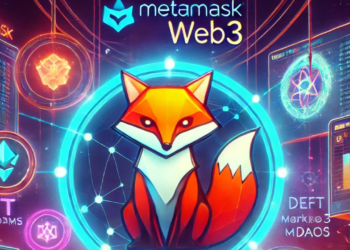Blockchain technology is at the forefront of digital innovation, offering decentralized and secure systems. However, as blockchain adoption grows, so do its challenges, particularly scalability and high transaction costs. Layer 2 blockchains have emerged as a critical solution to these issues, enabling blockchains to process more transactions while maintaining security and decentralization.
In this guide, we’ll dive deep into what Layer 2 blockchains are, how they work, their benefits, and examples of prominent Layer 2 solutions. We’ll also explore their challenges and the future of blockchain scalability.
What Are Layer 2 Blockchains?
Layer 2 blockchains are secondary frameworks or protocols built on top of Layer 1 blockchains, such as Bitcoin or Ethereum. They aim to address the limitations of Layer 1 by improving scalability, reducing transaction costs, and enhancing transaction speeds without compromising the core blockchain’s security or decentralization.
How Layer 2 Solutions Work
Layer 2 solutions offload some of the computational workload from the main chain (Layer 1) to a secondary layer. By processing transactions off-chain or aggregating them before recording the results on the main chain, Layer 2 solutions significantly improve the efficiency of blockchain networks.
Key Features of Layer 2 Blockchains
- Scalability:
- Layer 2 solutions increase the transaction throughput of blockchain networks, allowing them to handle thousands of transactions per second (TPS).
- Cost Reduction:
- By processing transactions off-chain, Layer 2 reduces the gas fees associated with Layer 1 blockchains.
- Security:
- Transactions on Layer 2 inherit the security of the underlying Layer 1 blockchain, ensuring trust and immutability.
- Interoperability:
- Many Layer 2 solutions facilitate seamless interaction between different blockchains.
Examples of Layer 2 Blockchains
1. Lightning Network (Bitcoin)
The Lightning Network is a Layer 2 solution designed to improve Bitcoin’s scalability. It enables faster and cheaper Bitcoin transactions by creating payment channels between users. Transactions occur off-chain and are only settled on the Bitcoin blockchain when channels are closed.
2. Polygon (Ethereum)
Polygon is a popular Layer 2 scaling solution for Ethereum. It uses sidechains to process transactions efficiently while maintaining compatibility with Ethereum’s main chain. Polygon supports decentralized applications (dApps) and DeFi platforms.
3. Optimistic Rollups (Ethereum)
Optimistic rollups bundle multiple transactions into a single batch and record them on Ethereum’s main chain. They use fraud proofs to ensure transaction validity without needing to verify every transaction on-chain.
4. zk-Rollups (Ethereum)
Zero-knowledge rollups aggregate transactions off-chain and provide cryptographic proofs to confirm their validity. zk-Rollups offer faster transaction processing and enhanced security compared to other Layer 2 solutions.
5. Immutable X (Ethereum)
Immutable X is a Layer 2 solution designed for NFTs. It uses zk-rollups to provide instant trading and zero gas fees for minting and transferring NFTs while maintaining Ethereum’s security.
How Layer 2 Solutions Enhance Blockchain Networks
1. Transaction Speed
Layer 2 solutions significantly reduce the time required to confirm transactions, enabling near-instant payments and interactions.
2. Lower Costs
By moving transactions off-chain, Layer 2 reduces the burden on Layer 1 networks, leading to lower transaction fees for users.
3. Environmental Benefits
Layer 2 solutions reduce the energy consumption associated with PoW-based Layer 1 blockchains by minimizing the computational workload.
4. Improved User Experience
Faster transactions and lower fees make blockchain technology more accessible and user-friendly, encouraging broader adoption.
Challenges Facing Layer 2 Blockchains
While Layer 2 solutions offer significant benefits, they also come with their own set of challenges:
1. Complexity
The added layer of technology increases the complexity of the ecosystem, which can be a barrier to entry for new users.
2. Security Risks
Although Layer 2 inherits the security of Layer 1, vulnerabilities in the Layer 2 protocol itself can expose users to risks.
3. Interoperability Issues
Integrating Layer 2 solutions with existing blockchain networks and dApps can be challenging, particularly for cross-chain interactions.
4. Adoption Hurdles
Developers and users may hesitate to adopt Layer 2 solutions due to the need for additional education and infrastructure adjustments.
Protecting Your Assets When Using Layer 2 Solutions
Using hardware wallets like Ledger or Trezor is essential for securing your assets when interacting with Layer 2 solutions. These wallets store private keys offline, safeguarding them from potential hacks or unauthorized access during transactions.
The Future of Layer 2 Blockchains
Layer 2 blockchains are poised to play a pivotal role in the evolution of blockchain technology. Here are some trends shaping their future:
1. Mass Adoption of Layer 2 Solutions
As transaction costs and speeds improve, more users and developers are likely to adopt Layer 2 solutions, driving blockchain scalability.
2. Integration with Layer 1 Upgrades
The development of Layer 1 networks, such as Ethereum 2.0, will complement Layer 2 solutions, creating a more robust and efficient blockchain ecosystem.
3. Expansion into New Use Cases
Layer 2 solutions will continue to evolve to support diverse applications, from gaming and NFTs to supply chain management and DeFi.
4. Enhanced Interoperability
Advancements in cross-chain communication protocols will enable seamless integration between Layer 2 solutions and other blockchain networks.
Final Thoughts
Layer 2 blockchains are revolutionizing the blockchain industry by addressing scalability and cost issues while maintaining security and decentralization. Whether you’re a developer building dApps or a user seeking faster and cheaper transactions, understanding Layer 2 solutions is essential for leveraging blockchain’s full potential.
To protect your digital assets, consider using trusted hardware wallets like Ledger or Trezor. These tools provide peace of mind by ensuring your private keys remain secure.
By embracing Layer 2 solutions, the blockchain community can unlock new opportunities for innovation and growth, paving the way for a more scalable and accessible decentralized future.
Disclaimer: This blog is for informational purposes only and does not constitute financial or investment advice. Always conduct your own research and consult with a professional advisor before engaging with blockchain technology or cryptocurrencies.










